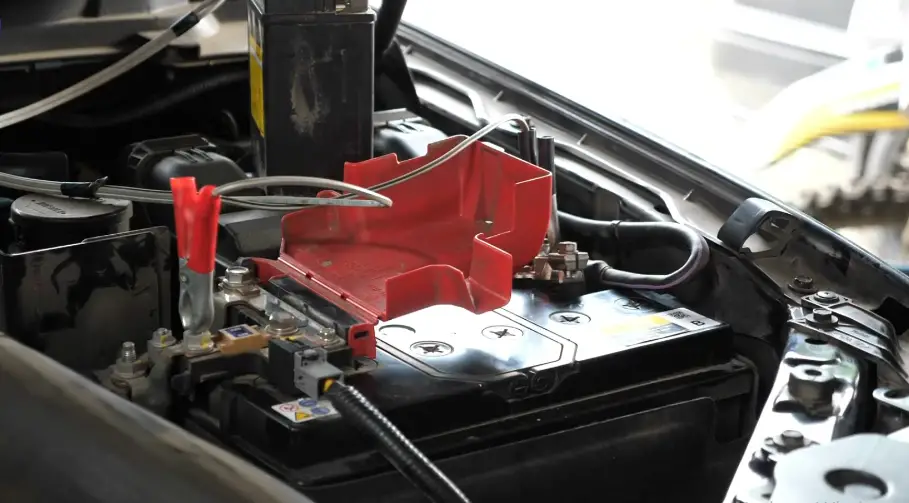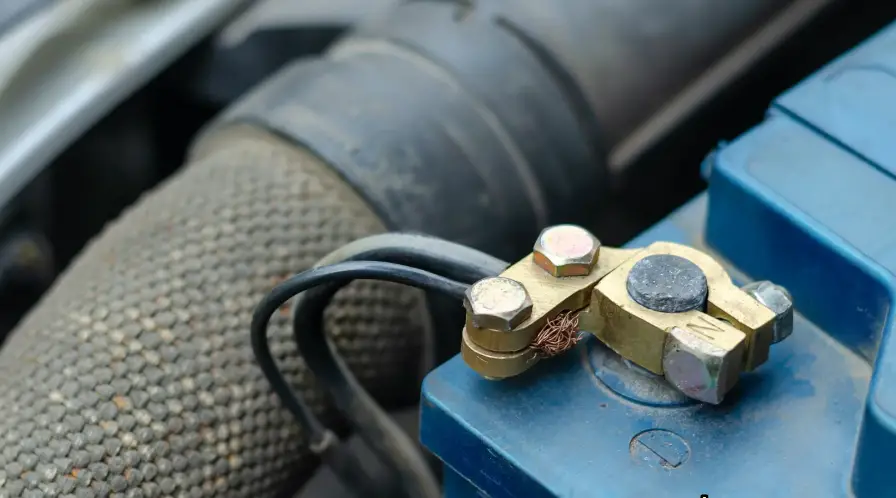Yes, you can clean a crankshaft position sensor if it becomes dirty or contaminated. Using an electrical contact cleaner and a soft cloth, you can remove oil, debris, and grime that may affect its performance. However, if the sensor is damaged or cleaning doesn’t resolve the issue, it may need to be replaced.
The crankshaft position sensor (CKP sensor) is a critical component of your vehicle’s engine management system, responsible for monitoring the position and rotational speed of the crankshaft. This data is crucial for proper ignition timing and fuel injection, ensuring that the engine runs smoothly and efficiently. Over time, however, the CKP sensor can become dirty or contaminated with oil, grease, or other debris, potentially affecting its performance.
Contents
Symptoms of a Dirty or Faulty CKP Sensor
Before deciding whether to clean or replace the crankshaft position sensor, it’s essential to recognize the symptoms of a bad crankshaft position sensor:
- Check Engine Light: One of the first signs of a problem with the CKP sensor is the illumination of the check engine light. The ECU may detect inconsistent or weak signals from the sensor, triggering the light.
- Engine Stalling: A dirty CKP sensor may cause the engine to stall unexpectedly, especially when idling or coming to a stop.
- Rough Idling: If the CKP sensor is not providing accurate data, the engine may run rough or idle poorly, as the ECU struggles to maintain proper timing.
- Starting Issues: In some cases, a contaminated CKP sensor can lead to difficulty starting the engine, as the ECU cannot accurately determine the crankshaft’s position.

Can You Clean a Crankshaft Position Sensor?
Yes, you can clean a crankshaft position sensor, but it must be done with care. Cleaning can be a cost-effective way to restore the sensor’s performance if it has become contaminated with dirt, oil, or other debris. However, if the sensor is damaged or worn out, cleaning may not resolve the issue, and replacement may be necessary.
Steps to Clean a Crankshaft Position Sensor
Follow the steps below to clean the position sensor of crankshaft –
- Gather Necessary Tools and Materials:
- Safety gloves
- Safety glasses
- Socket set or wrenches (to remove the sensor)
- Electrical contact cleaner or sensor-safe cleaner
- Soft cloth or microfiber towel
- Compressed air (optional)
- Disconnect the Battery:
- Before beginning any work on the vehicle’s electrical components, disconnect the negative terminal of the battery. This step is crucial to prevent any electrical shorts or accidental shocks.
- Locate the CKP Sensor:
- Consult your vehicle’s service manual to find the exact location of the CKP sensor. It is usually found near the crankshaft pulley, flywheel, or bell housing. In some vehicles, it may be necessary to remove other components, such as the air intake or engine covers, to access the sensor.
- Remove the CKP Sensor:
- Once located, carefully remove the sensor by disconnecting the electrical connector and unscrewing any mounting bolts. Be gentle to avoid damaging the sensor or the wiring.
- Inspect the Sensor:
- After removal, inspect the sensor for any signs of damage, such as cracks, broken wires, or excessive wear. If the sensor is damaged, cleaning it may not be effective, and replacement will be necessary.
- Clean the Sensor:
- Spray the CKP sensor with electrical contact cleaner or a sensor-safe cleaner. These cleaners are designed to remove oil, grease, and debris without leaving any residue or damaging the sensor’s delicate components.
- Gently wipe the sensor with a soft cloth or microfiber towel. Avoid using abrasive materials that could scratch or damage the sensor.
- If using compressed air, gently blow air over the sensor to remove any remaining debris. Be careful not to blow too forcefully, as this could damage the sensor.
- Reinstall the Sensor:
- After cleaning, reinstall the CKP sensor in its original location. Reconnect the electrical connector and secure any mounting bolts.
- Ensure that the sensor is properly aligned and seated, as misalignment can lead to inaccurate readings.
- Reconnect the Battery and Test:
- Reconnect the negative terminal of the battery and start the engine. Monitor the engine for any signs of improvement, such as smoother idling and the absence of the check engine light.
- If the symptoms persist, further diagnosis may be required, and the sensor may need to be replaced.

Frequently Asked Questions
Here are some FAQs about the cleaning crankshaft position sensor –
1. How often should I clean my crankshaft position sensor?
Cleaning the crankshaft position sensor is not typically part of regular maintenance, but it can be done if you notice symptoms like rough idling or engine stalling. Generally, the sensor should be inspected and cleaned if you suspect contamination or during routine maintenance if it’s accessible.
2. What can cause a crankshaft position sensor to become dirty?
Oil leaks, dust, and debris from the road, or engine grime can accumulate on the CKP sensor over time, especially if the sensor is located in an area prone to exposure, such as near the crankshaft pulley or flywheel.
3. Can cleaning the crankshaft position sensor improve engine performance?
Yes, cleaning a contaminated CKP sensor can restore accurate readings to the ECU, potentially improving engine performance, reducing rough idling, and preventing stalling or starting issues.
4. What should I do if cleaning the sensor doesn’t fix the problem?
If cleaning the CKP sensor does not resolve the issue, it may be necessary to replace the sensor. Additionally, consider checking the wiring, connectors, and related components for any faults or damage.
5. Is it safe to use any cleaner on the crankshaft position sensor?
No, it’s important to use an electrical contact cleaner or a sensor-safe cleaner specifically designed for delicate components. Using harsh chemicals or abrasive cleaners can damage the sensor and affect its performance.
Conclusion
Cleaning a crankshaft position sensor can be a straightforward and cost-effective way to address issues related to sensor contamination. However, it’s essential to handle the sensor carefully and use the proper cleaning materials to avoid damage. If the sensor is physically damaged or if cleaning does not resolve the symptoms, replacement may be necessary.